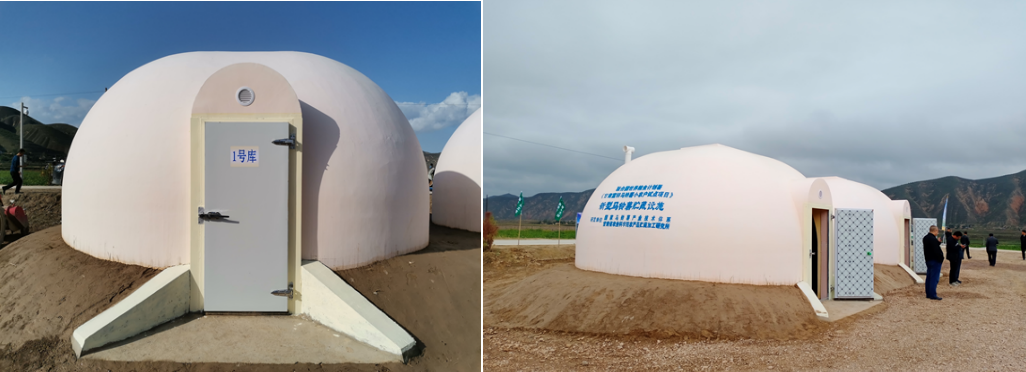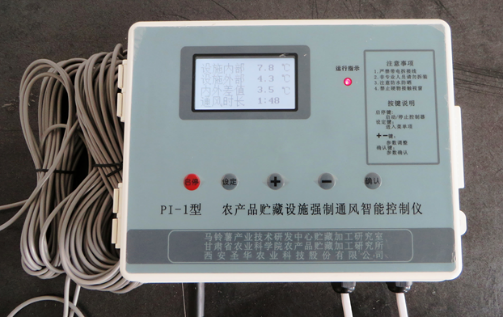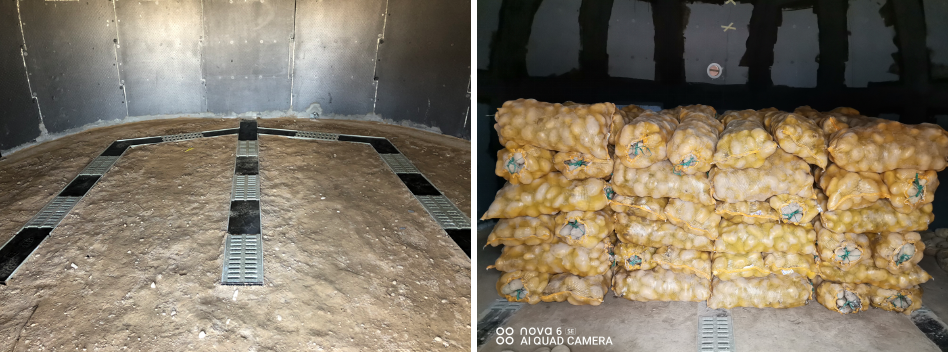China has made remarkable achievements in reducing poverty and hunger over the past three decades. The grain output in China has grown steadily and reached 686.5 billion kg in 2022, representing an increase of 93% from 355 billion kg in 1982. The per capita grain possession reached around 486 kg, higher than the international food security standard line of 400 kg per capita. However, post-harvest losses still constitute a big challenge to China’s food security. According to the National Food and Strategic Reserves Administration of China, the annual post-harvest loss of grain in the storage, transportation and processing reached 35 billion kg and about 8% of the average grain loss at farmers’ household level is caused by poor storage facilities and lack of technical guidance on storage methods. It is critical to reduce post-harvest losses to further improve China’s food security.
As one of the initiatives of WFP China Office to support Chinese government in their efforts to promote food security and achieve the Sustainable Development Goal 2 of Zero Hunger, a pilot project is launched in Gansu province, one of the poorest provinces in China, to support local smallholder farmers growing zinc-enriched potatoes. This project aims at piloting a sustainable method of improving the livelihoods of farmers and addressing the issue of zinc deficiency in poverty-stricken areas in Gansu province of China by promoting the growing of zinc-enriched potatoes by smallholder farmers and establishing the zinc-enriched potatoes value chain while at the same time increasing farmers’ consumption of self-produced zinc-enriched potatoes.
Research by Gansu Academy of Agricultural Sciences shows that the post-harvest losses of potato at the household level in Gansu province is a big issue for smallholder farmers due to the lack of guidance for the construction of storage facility and lack of knowledge on storage and fresh-keeping methods. The current potato storage facility at farmer household level is a dug cave in the loess hills or a dug pit in the backyard of farmer households without ventilation. After harvest, farmers often dump potatoes in the cave or the pit and cover it with padded materials. The post-harvest loss of potato at farmers’ household level in Gansu province can be as high as 20%-25% due to improper storage. Therefore, WFP attaches great importance in this project to help smallholder farmers to improve their potato storage facilities and equip them with knowledge on the storage and fresh-keeping methods of potatoes with the technical support from Agricultural Product Storage and Processing Research Institute of Gansu Academy of Agricultural Sciences.

Seven demonstration potato storage facilities have been built at farmer household level in the project area. Qualified design institute has been engaged since the initiation of this project to provide tailored storage design in line with local climate conditions and landform and meeting the specific needs of improved storage facilities of farmer beneficiaries of the project. The newly designed demonstration potato storage facility has the following characteristics:
· Insulation materials The storage facility is built with new thermal insulation material to ensure good insulation effect. The temperature difference between inside and outside of the storage facility can reach 10℃. The insulation material also has light weight and adopts modular assembly to ensure easy construction of the facility.
· Ventilation system The storage facility also builds in ventilation systems which use natural cold sources to maintain or reduce the temperature in the storage facility. The ventilation systems can be switched between natural mode and forced mode as well as internal circulation and external ventilation.

Considering the inconvenience for farmers to ventilate the facility during night-time which is the best ventilation time during the initial storage period of potato, a forced ventilation intelligent control instrument is developed and installed to monitor the temperature inside and outside the facility and automatically adjust the internal temperature and humidity of the facility.
· Exterior temperature required: The storage facility is suitable to be built in areas where the natural cold resource is abundant and the exterior temperature during the potato storage period is not lower than -20℃ and not higher than 15℃. It can be built either above the ground or semi-underground according to local climatic conditions.
· Construction area and storage capacity The minimum construction area of the storage facility is 23m2. The demonstration storage facility that has been built in the project area is 28m2 anditsmaximum storage capacity is about 20 tons. The construction area and storage capacity can be built larger to meet the needs of individual smallholder farmer households as well as family farms or farmers’ cooperatives.
· Construction cost The cost of the construction materials for a storage facility of 23 m2, including the insulation material, waterproofing material, external coating, insulation door, ventilation facilities etc, is approximately CNY20,000 (USD2,800). The cost of labor, foundation and transportation vary depending on the construction site. The labor cost is largely reduced by using modular assembly with light weight insulation material. A storage facility of 28m2 can be built by two people within a week.
· Durable years: As a fixed asset, the storage facility can be used for at least 20 years.
The effective thermal insulation, the easiness for construction and the low cost of the potato storage facility make it suitable to be used by smallholder farmers to improve the storage conditions of potato, prolonging the storage time and reducing the post-harvest storage loss. Besides potato, the facility can also be used for storing onions, garlic, radishes, carrots, and other relatively durable agricultural products.

On-site training has also been provided to the beneficiary farmers on post-harvest storage, including the temperature, humidity, carbon dioxide concentration, light and ventilation conditions required for the storage facility, preparations needed inside the storage facility before the storage of the potatoes, screening standards of potatoes, the suitable amount and height of the potatoes in the storage facility, methods to inhibit sprouting and prevent rot as well as management needed during the storage period. Printed hand-outs on the storage and fresh-keeping methods of potatoes have also been distributed to farmers during the training.
The beneficiary farmers’ post-harvest loss of potatoes during storage can be reduced by 5.7 percentage points by adopting the new storage facility and following the guidance of potato storage methods.
For more information, please contact WFP China COE (wfpcn.coe@wfp.org)
Category
A Practical Post-harvest Loss Management Solution from China
Contributor
A Practical Post-harvest Loss Management Solution from China
Country
Case Study

